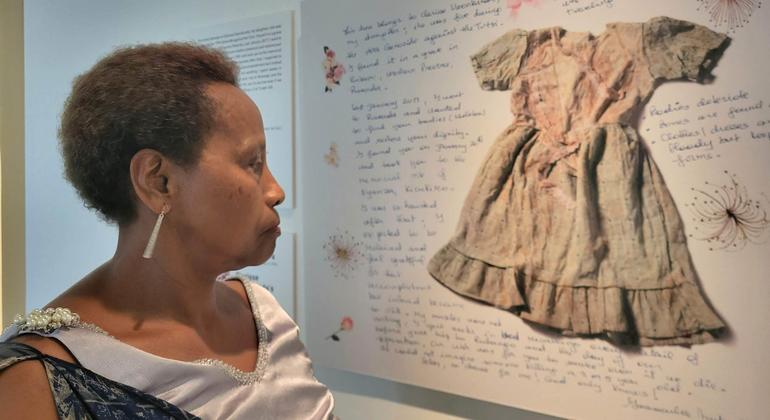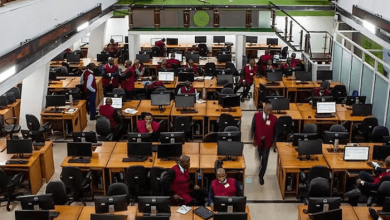First Person: Keeping the Memories of the Rwandan Genocide Alive

Children’s clothes, and five-year-old clothes and sweaters. Washed, cleaned, but still stained with blood.
These are the personal items that Immaculée Songa donated to “Stories of Survival and Memory – A call to action for the prevention of genocide,” currently on display at the UN Headquarters, along with a photo album, showing her daughters , Raissa and Clarisse, laughed and laughed.
“The things in this exhibition are important to me, because they remind us of the lives, the experiences of our people who are gone, who are no longer here. Their lives have been taken away.
Six years ago, I returned to Rwanda to look for the remains of my family. In the mass grave, I recognize the clothes my daughters wore in the last moments of their lives. The clothes are stuck to each other. I have all of them left of my children. So, I took them.
I first displayed my daughters’ clothing at the Illinois Holocaust Museum in the United States, to tell their story. Even though they were washed, you can see the blood stains and you can imagine how they died.
Let us not forget my daughters
We talk about millions of Rwandans, Tutsis killed during the genocide, and we seem to forget the individuals. This exhibition is here so that we can remember the story of each individual.
If I could talk to my daughters, I would tell them that I have not forgotten them, I love them very much, and I have talked about them very much because they died a cruel death that they did not deserve.
I am the immortal mother, the woman who cries a lot. I told myself that God created me for a reason, to give me the strength to talk about my daughters, and to make sure they are not forgotten.
The clothes worn by Immaculée Songa’s daughters, Clarisse and Raissa, are on display at the UN exhibition “Stories of Survival and Remembrance – A Call to Action for the Prevention of Genocide”
Facts don’t lie
We have a responsibility to tell the world that there is injustice, that people are dying because of injustice, and that the genocide in Rwanda was planned and carried out by very intelligent people who hired soldiers who convinced them to kill. they. The responsibility to prevent genocide lies with governments, those in positions of influence, and the United Nations.
On our side, we also do our part. For example, we organize memorials and education days to explain to the public what can happen if people are not careful. Because genocide can be prevented.
There are several stages of genocide, and the last stage is denial. Today, all over the world, people reject genocide. They have given them platforms, they write books, they say that the genocide did not happen.
Facts don’t lie. So, if people see the truth, when they see my children’s clothes, there is no mistake. People say that children have been killed, and now they see that it is true.
To ensure that the genocide is not repeated, we must mobilize everyone. We must go to schools, and teach peace. When I talk to students, I can see that they change. It makes a difference.
Before the genocide, 95 percent of the population was uneducated, and it was very easy to convince them to kill. I think, if people have access to the education they need, they will advocate for peace.”
The exhibition “Stories of Survival and Remembrance – A Call to Action for Genocide Prevention” opened at the UN headquarters in New York.
“Stories of Survival and Memory – Call to Action for the Prevention of Genocide”, is on display at the UN Headquarters until 15 June.
The objects in the exhibition – clothes, toys, photographs, letters, instructions and other seemingly ordinary objects – survived the Holocaust, genocide and other great crimes in Cambodia, Srebrenica (Bosnia Herzegovina) and Rwanda.
The exhibition was held during the year of the 75th anniversary of the adoption of the Universal Declaration of Human Rights and the Convention on the Prevention and Punishment of the Crime of Genocide.
It was opened a few days before the celebration of the International Day of Observation on the Genocide against the Tutsis in 1994 in Rwanda, at the UN General Assembly Hall on Friday, April 14.







